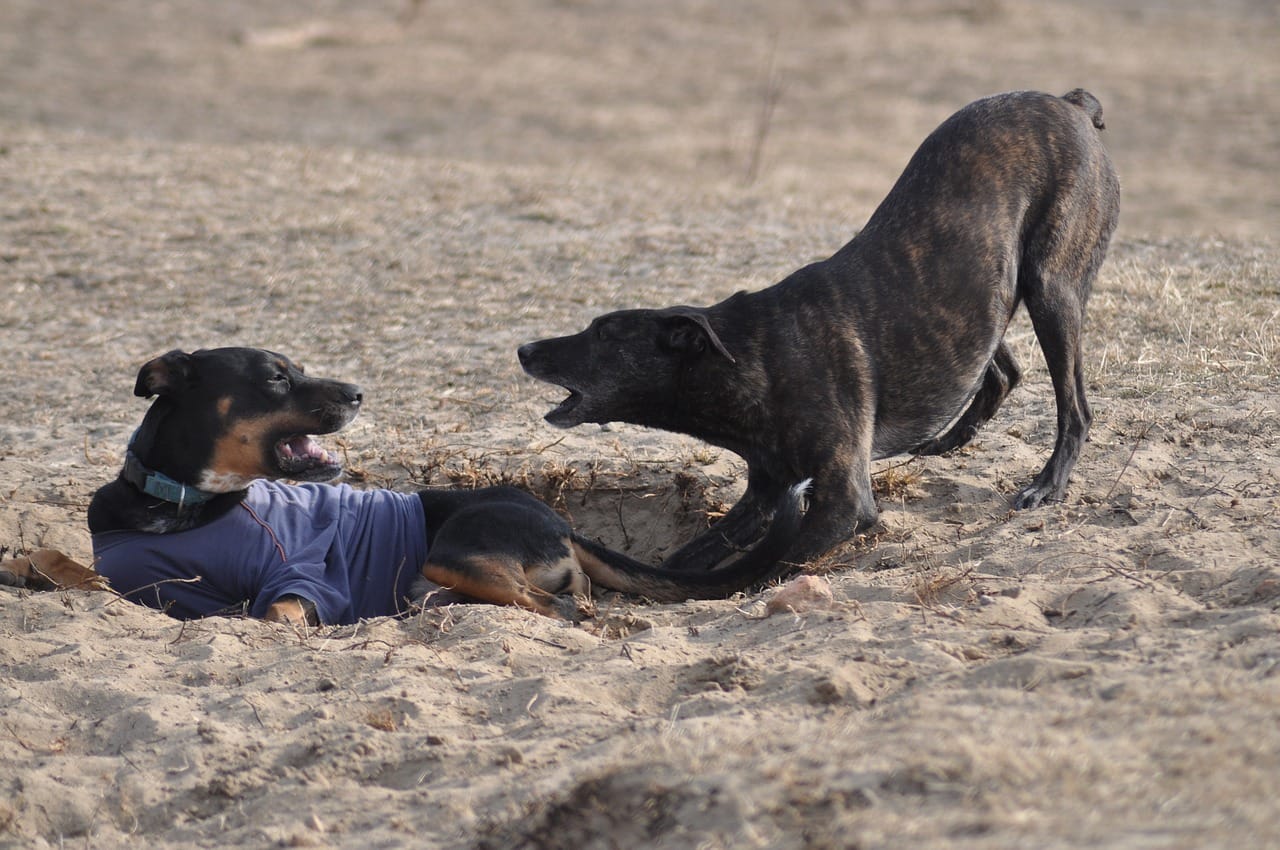Why Is My Dog Pooping Blood?
Are you concerned about your furry friend’s health? If you’ve ever wondered, “Why is my dog pooping blood?” – worry no more! In this article, we will explore the possible causes behind this alarming symptom and provide you with helpful information and guidance to ensure your dog’s well-being. Whether it’s a minor issue or a more serious concern, understanding why your dog is experiencing this can help you address the problem and seek appropriate veterinary care if necessary. Let’s delve into the various reasons behind why your dog may be pooping blood and how you can help them feel better. Have you noticed blood in your dog’s stool? It can be concerning and alarming to see. But don’t worry, there are various reasons why this may be happening, and most of them can be easily addressed. In this article, we will explore the different causes of blood in a dog’s stool and provide you with an understanding of each condition.
Internal Parasites
Internal parasites such as hookworms, roundworms, whipworms, and tapeworms can contribute to blood in a dog’s stool. These parasites attach themselves to the intestinal lining, causing irritation and bleeding. If your dog has recently been in contact with contaminated soil or ingested an infected animal, it is possible that internal parasites are the cause. Fortunately, these parasites can be easily treated with deworming medications prescribed by a veterinarian.
Hookworms
Hookworms are small and thread-like parasites that attach themselves to a dog’s intestines, causing blood loss and discomfort. Dogs can contract hookworms through contact with infected feces or when walking on contaminated soil. Symptoms of hookworm infestation include bloody diarrhea, weight loss, anemia, and weakness.
Roundworms
Roundworms are one of the most common intestinal parasites in dogs. They are transmitted through infected feces and can cause gastrointestinal issues, including bloody stool. Puppies are particularly susceptible to roundworm infestations, as they can be passed on from their mother. Common symptoms include a pot-bellied appearance, vomiting, diarrhea, and coughing.
Whipworms
Whipworms are thin and whip-like parasites that reside in a dog’s large intestine. They can cause irritation and inflammation, leading to bloody diarrhea. Dogs usually contract whipworms by ingesting contaminated soil or feces. Symptoms of a whipworm infestation may include weight loss, dehydration, anemia, and lethargy.
Tapeworms
Tapeworms are segmented parasites that can be seen in a dog’s stool, resembling small grains of rice. They can cause irritation and inflammation in the intestines, resulting in blood appearing in the stool. Dogs can contract tapeworms by ingesting infected fleas or through the consumption of raw or undercooked meat. In addition to blood in the stool, tapeworm infestations may cause itching around the anus, vomiting, and weight loss.
Digestive Issues
There are several digestive issues that can lead to blood in a dog’s stool. These conditions can range from mild to severe and may require veterinary intervention.
Gastritis
Gastritis refers to the inflammation of the stomach lining. It can be caused by various factors such as dietary indiscretion, infections, or certain medications. When the stomach lining becomes inflamed, it can lead to bloody stool. Other symptoms of gastritis include vomiting, loss of appetite, and abdominal discomfort.
Gastroenteritis
Gastroenteritis is characterized by inflammation of the stomach and intestines. It can be caused by viral or bacterial infections, dietary changes, or ingestion of toxic substances. When the gastrointestinal tract is inflamed, it can result in bloody diarrhea. Dogs with gastroenteritis may also experience vomiting, abdominal pain, and dehydration.
Pancreatitis
Pancreatitis is the inflammation of the pancreas and can cause digestive issues, including bloody stool. It can occur due to various reasons, such as a high-fat diet, certain medications, or metabolic disorders. Dogs with pancreatitis may display symptoms such as abdominal pain, vomiting, decreased appetite, and excessive thirst.
Intestinal Obstruction
An intestinal obstruction occurs when there is a blockage in the digestive tract, preventing the normal passage of stool. This can be caused by the ingestion of foreign objects, tumor growth, or a twisting of the intestines. An obstruction can lead to bleeding in the stool, accompanied by symptoms such as vomiting, abdominal pain, and constipation.
Dietary Changes
Changes in your dog’s diet can also result in blood appearing in their stool. It is important to introduce new food gradually to avoid digestive upset.
Food Allergies
Some dogs may develop food allergies, which can lead to inflammation in the digestive tract and, in turn, cause bloody stool. Common food allergens for dogs include grains, chicken, beef, and dairy products. If your dog has a food allergy, they may also exhibit other symptoms such as itching, skin rashes, and ear infections.
Sudden Change in Diet
Rapid changes in your dog’s diet can disrupt the natural balance of their digestive system, leading to loose or bloody stool. When transitioning to a new food, it is important to do so gradually over a period of several days. This allows your dog’s digestive system to adjust and reduces the likelihood of gastrointestinal issues.
Eating Spoiled Food
Consuming spoiled or contaminated food can cause digestive upset and bloody stool. Dogs are known for their scavenging tendencies, and they may accidentally eat something that has spoiled or is contaminated with harmful bacteria. This can result in gastrointestinal irritation, leading to bloody diarrhea. Always be mindful of what your dog has access to and ensure they are not consuming anything potentially harmful.
Ingestion of Foreign Objects
Dogs have a tendency to chew on things they shouldn’t and sometimes swallow foreign objects, which can lead to bloody stool.
Chewing on Sharp Objects
If your dog chews on sharp objects such as sticks, bones, or toys, it can cause injury to their digestive tract. This can lead to bleeding in the stool. It is important to provide your dog with appropriate chew toys and supervise their playtime to prevent this type of injury.
Swallowing Small Toys or Bones
Ingesting small toys or bones can cause obstruction or damage to the digestive tract, leading to bloody stool. It is crucial to keep small items out of your dog’s reach and provide them with safe chewing alternatives. If you suspect your dog has swallowed something they shouldn’t, seek veterinary attention immediately.
Bacterial or Viral Infections
Bacterial or viral infections can also cause blood in a dog’s stool. These infections can result from exposure to contaminated food, water, or direct contact with infected animals.
Salmonella
Salmonella is a bacterial infection that can cause gastrointestinal issues in dogs. It is commonly associated with contaminated food or raw meat. Symptoms of Salmonella infection may include bloody diarrhea, vomiting, fever, and loss of appetite.
Campylobacter
Campylobacter is another bacterial infection that affects the gastrointestinal tract of dogs. It can be transmitted through contaminated food, water, or contact with other infected animals. In addition to bloody diarrhea, dogs infected with Campylobacter may experience abdominal pain, fever, and lethargy.
Parvovirus
Parvovirus is a highly contagious viral infection that primarily affects puppies and unvaccinated dogs. It can cause severe gastrointestinal symptoms, including bloody diarrhea. Parvovirus is a potentially life-threatening condition and requires immediate veterinary attention. Other symptoms of parvovirus include vomiting, lethargy, loss of appetite, and dehydration.
Canine Distemper
Canine distemper is a viral disease that can affect multiple body systems, including the gastrointestinal tract. It can cause inflammation and bleeding in the intestines, leading to bloody stool. Canine distemper is a serious condition that requires veterinary care. Additional symptoms of distemper may include nasal discharge, coughing, fever, and neurological signs.
Inflammatory Bowel Disease
Inflammatory bowel disease (IBD) is a chronic condition that results in inflammation of the intestinal lining. It can lead to the presence of blood in the stool and other gastrointestinal symptoms.
Idiopathic Lymphocytic-Plasmacytic Enteritis
This form of IBD is characterized by inflammation of the small intestine. The exact cause of idiopathic lymphocytic-plasmacytic enteritis is unknown, hence the term “idiopathic.” Dogs with this condition may experience chronic or intermittent bloody stool, weight loss, and lack of appetite.
Granulomatous Colitis
Granulomatous colitis is a type of IBD that specifically affects the large intestine. It is characterized by the formation of granulomas, which are small nodules of tissue. Dogs with granulomatous colitis may have bloody diarrhea, increased frequency of bowel movements, and abdominal pain.
Colitis
Colitis refers to the inflammation of the colon, which can result in bloody stool. There are different types of colitis, each with its own causes and symptoms.
Infectious Colitis
Infectious colitis can occur due to bacterial or viral infections in the colon. These infections can cause inflammation and bleeding, leading to blood in the stool. Common symptoms include diarrhea, urgency to defecate, and abdominal discomfort.
Inflammatory Colitis
Inflammatory colitis is a condition in which the colon becomes inflamed due to an abnormal immune response. It can cause bleeding in the stool and other gastrointestinal symptoms. Inflammatory colitis can be a result of various factors, including genetics, allergies, or autoimmune disorders.
Anal Gland Problems
The anal glands are small sacs located on either side of a dog’s anus. They secrete a liquid substance that helps with marking territory and communication. However, these glands can sometimes become impacted or infected, leading to blood in the stool.
Impacted or Infected Anal Glands
When the anal glands become impacted or infected, they can cause discomfort and inflammation in the surrounding area. This can result in bleeding during bowel movements. Dogs with impacted or infected anal glands may show signs such as scooting, excessive licking of the anal area, and discomfort when sitting.
Anal Gland Tumors
Although rare, tumors can develop in the anal glands, leading to bleeding in the stool. These tumors may be benign or malignant, and they require veterinary evaluation and treatment. Other symptoms of anal gland tumors may include swelling, pain, and weight loss.
Trauma or Injury
Sometimes, blood in a dog’s stool can be a result of trauma or injury to the rectum or internal organs. These injuries can occur due to accidents or physical trauma.
Rectal Injury
Injuries to the rectum can cause bleeding during bowel movements. These injuries can range from minor tears to more severe trauma. Common causes of rectal injury include foreign object insertion, dog fights, or accidents involving impact to the pelvic region.
Trauma to Internal Organs
Severe trauma, such as being hit by a car or falling from a height, can cause internal injuries that result in bleeding in the stool. These injuries may affect the intestines or other organs involved in the digestive process.
In conclusion, there are several potential causes for blood in a dog’s stool, ranging from mild conditions to more serious health issues. If you notice blood in your dog’s stool or any other concerning symptoms, it is important to consult your veterinarian for a proper diagnosis and appropriate treatment. Remember, early detection and intervention can lead to better outcomes for your furry friend.












